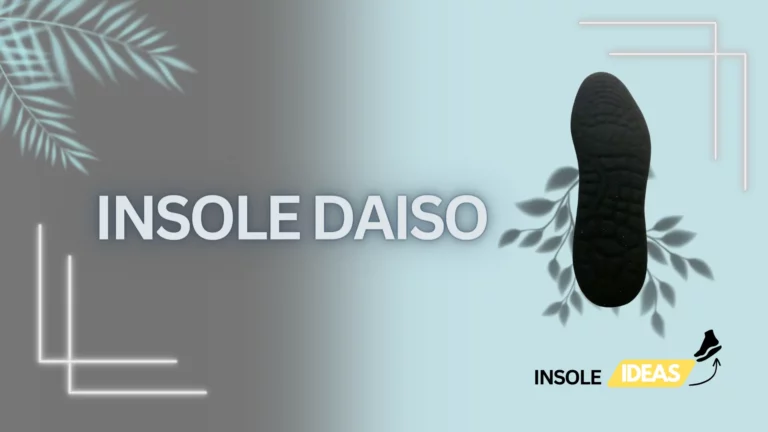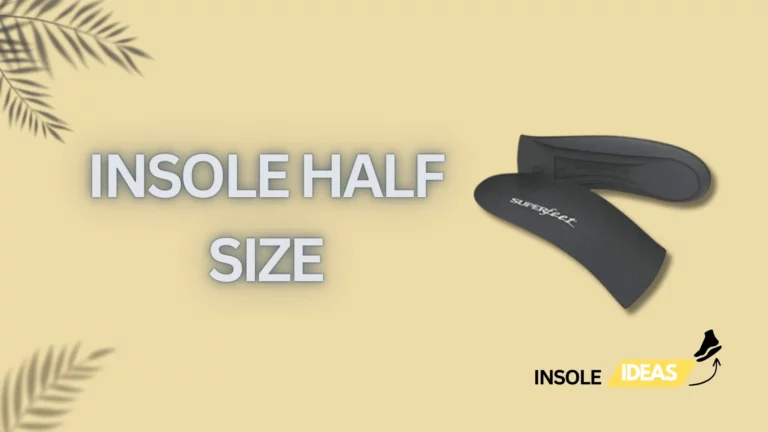are insoles good for plantar fasciitis
Are Insoles Effective for Treating Plantar Fasciitis?
Inflammation of the plantar fascia, a thick band of tissue linking the heel to the bottom of the foot, is a frequent foot ailment known as plantar fasciitis. bone to the toes. This inflammation typically results from overuse, improper footwear, or biomechanical issues.
Explanation of Plantar Fasciitis
Plantar fasciitis often develops gradually over time, with symptoms such as heel pain and stiffness, particularly in the morning or after periods of rest. Prolonged standing, walking, or other physical activity may make the discomfort worse. It can significantly impact one’s ability to engage in daily activities, exercise, or even walk comfortably.
Purpose of Insoles in Managing Plantar Fasciitis
Insoles, also known as orthotics or shoe inserts, serve as supportive devices that can help alleviate the symptoms of plantar fasciitis. They are designed to provide additional cushioning, support, and alignment to the foot, thus reducing strain on the plantar fascia and promoting proper foot mechanics.
Understanding Plantar Fasciitis
Plantar fasciitis is characterized by inflammation of the plantar fascia, a thick band of tissue that runs along the bottom of the foot. It is often caused by repetitive stress or strain on the plantar fascia, leading to micro-tears and inflammation.
Definition and Causes
Plantar fasciitis commonly occurs in individuals who engage in activities that involve repetitive weight-bearing on the feet, such as running, jumping, or standing for prolonged periods. Other contributing factors include tight calf muscles, obesity, improper footwear, and structural abnormalities of the foot, such as high arches or flat feet.
Symptoms and Effects on Daily Life
The hallmark symptom of plantar fasciitis is heel pain, particularly during the first steps in the morning or after periods of inactivity. The pain may also worsen after prolonged standing or activity. In addition to pain, individuals with plantar fasciitis may experience stiffness, swelling, and tenderness along the bottom of the foot. These symptoms can significantly impact daily activities, exercise routines, and overall quality of life.
In conclusion, understanding the nature and impact of plantar fasciitis is crucial for effective management and treatment. By addressing the underlying causes and symptoms of the condition, including through the use of supportive devices like insoles, individuals can find relief and regain mobility in their daily lives.
Role of Insoles in Managing Plantar Fasciitis
Insoles play a crucial role in managing plantar fasciitis by providing support, cushioning, and alignment to the foot, ultimately reducing strain on the plantar fascia and promoting proper foot mechanics.
Explanation of Insoles
Insoles, also known as orthotics or shoe inserts, are supportive devices that are placed inside the shoes to provide additional cushioning, support, and stability to the feet. They come in various shapes, materials, and designs to cater to different foot types and conditions.
Mechanism of Action
The primary mechanism of action of insoles in managing plantar fasciitis is to redistribute pressure and alleviate stress on the plantar fascia. They help absorb shock and provide cushioning to the heel and arch of the foot, reducing the impact of weight-bearing activities and allowing for smoother movement.
Types of Insoles Available
Several types of insoles are available for plantar fasciitis, including off-the-shelf inserts, custom-made orthotics, and heel cups. Off-the-shelf inserts are readily available and can provide basic support and cushioning, while custom-made orthotics are specially designed to address individual foot biomechanics and provide tailored support.
Benefits of Using Insoles for Plantar Fasciitis
Using insoles for plantar fasciitis offers numerous benefits, including:
Pain relief: Insoles help alleviate heel pain and discomfort associated with plantar fasciitis by providing cushioning and support to the affected area.
Improved foot alignment: Insoles promote proper foot alignment, reducing strain on the plantar fascia and preventing further aggravation of the condition.
Enhanced comfort: The additional cushioning provided by insoles can improve overall foot comfort, making walking and standing more tolerable for individuals with plantar fasciitis.
Effectiveness of Insoles for Plantar Fasciitis
Insoles are effective in managing plantar fasciitis, as evidenced by research findings, success stories, and testimonials from individuals who have experienced relief from their symptoms.
Research Findings on the Effectiveness of Insoles
Numerous studies have demonstrated the effectiveness of insoles in reducing pain and improving function in individuals with plantar fasciitis. Research has shown that insoles can significantly decrease heel pain and improve overall foot function, enhancing mobility and quality of life.
Success Stories and Testimonials
Many individuals with plantar fasciitis have reported significant relief from their symptoms after using insoles. Success stories and testimonials abound, with individuals praising the effectiveness of insoles in alleviating heel pain, improving foot comfort, and allowing them to resume their normal activities without discomfort.
Potential Limitations or Drawbacks of Using Insoles
While insoles can be highly effective in managing plantar fasciitis for many individuals, they may not provide complete relief for everyone. Some individuals may find certain types of insoles uncomfortable or ineffective, and it may take some trial and error to find the right fit and support.
Recommendations and Best Practices
When considering the use of insoles for plantar fasciitis, it is essential to follow recommendations and best practices to ensure optimal results and comfort.
When to Consider Using Insoles
Insoles can be considered as part of the treatment plan for plantar fasciitis, especially for individuals experiencing persistent heel pain or discomfort despite conservative measures such as rest, stretching, and footwear modifications.
Choosing the Right Type of Insoles
It is essential to choose the right type of insoles based on individual foot biomechanics, activity level, and preferences. Consulting with a healthcare professional or podiatrist can help determine the most suitable option for addressing specific needs and symptoms.
Other Complementary Treatments or Lifestyle Changes
In addition to using insoles, individuals with plantar fasciitis may benefit from other complementary treatments and lifestyle changes, such as physical therapy, stretching exercises, footwear modifications, and weight management. These approaches can help address underlying biomechanical issues and promote overall foot health.
Conclusion
In conclusion, using insoles for plantar fasciitis can be highly beneficial in providing relief from pain, improving foot function, and enhancing overall comfort. By understanding the role of insoles in managing plantar fasciitis and following recommendations for their use, individuals can effectively alleviate symptoms and regain mobility in their daily lives.





